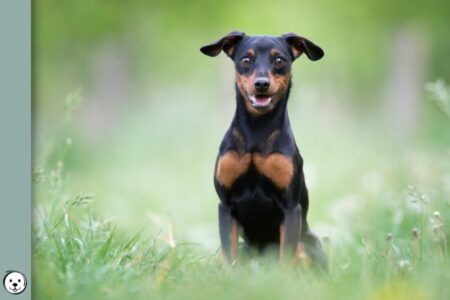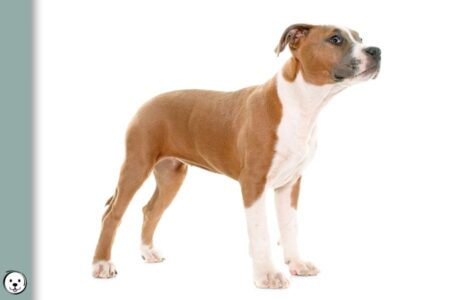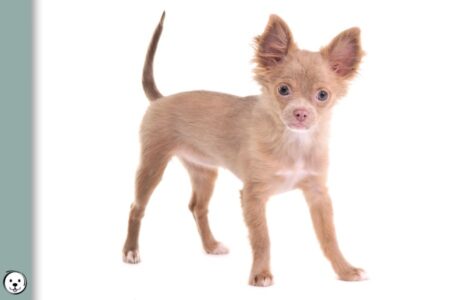An overview of Labrador Retriever colors and their genetics.
| KB/KB dom. black | E/- normal | e/e recessive red |
| B/- black | 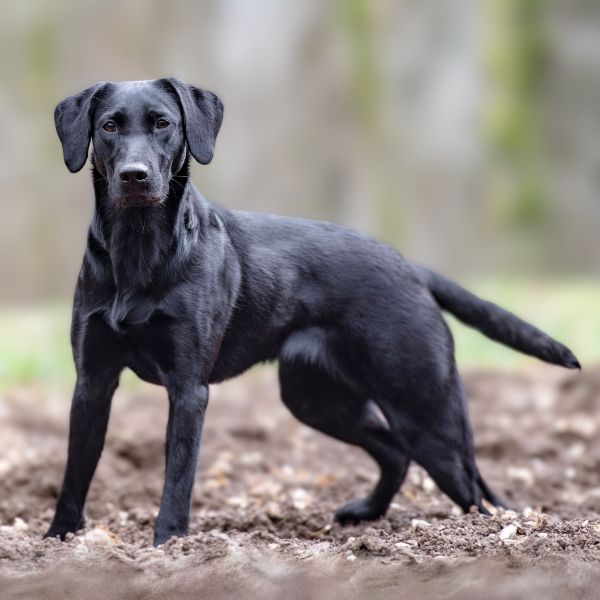 black | 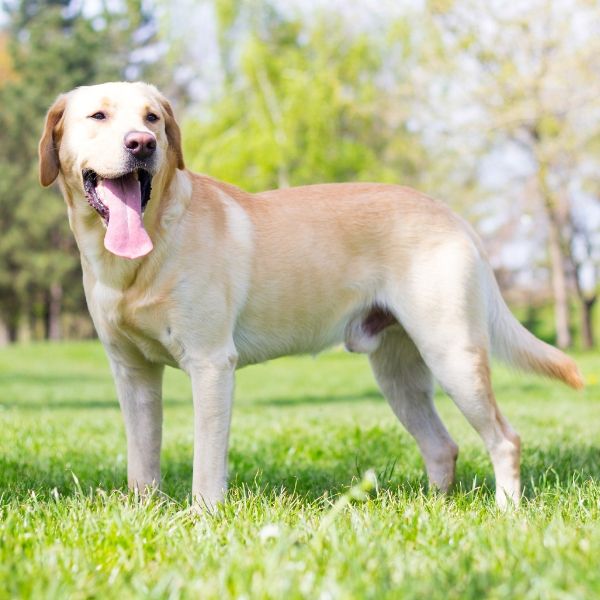 black-based yellow |
| b/b brown | 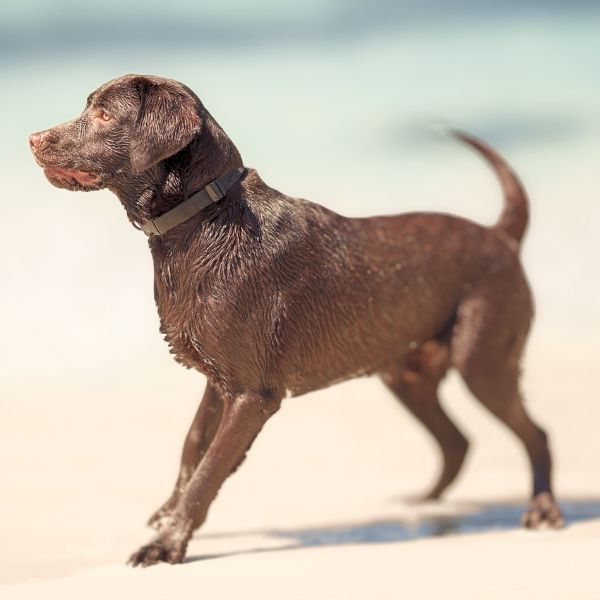 brown, chocolate, liver | 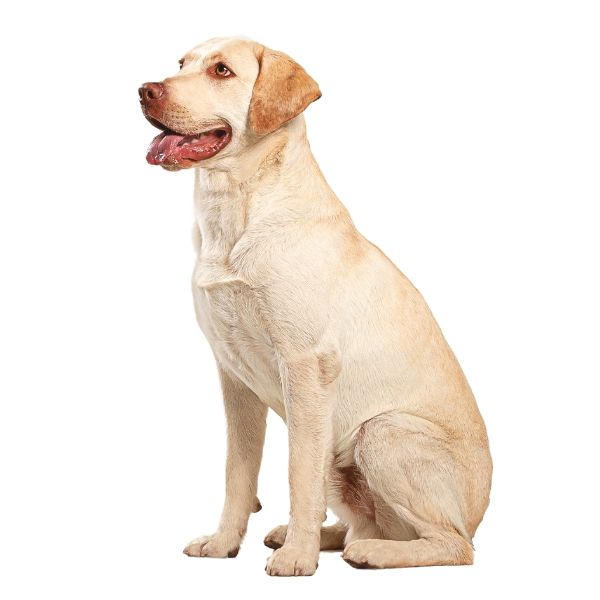 brown-based yellow,“Dudley” |
Labrador Retrievers Color Overview
A short discussion of breed standard patterns in the Labrador Retriever:
Black

Solid black Labrador Retrievers express dominant black (KB/KB) with black eumelanin (B/B or B/b).
They can not be e/e at the E locus.
| E LOCUS | K LOCUS | B LOCUS |
|---|---|---|
| E/E | KB/KB | B/B |
| E/E | KB/KB | B/b |
| E/e | KB/KB | B/B |
| E/e | KB/KB | B/b |
Chocolate

Solid brown Labs express dominant black (KB/KB) with brown eumelanin (b/b).
They can not be e/e at the E locus.
| E LOCUS | K LOCUS | B LOCUS |
|---|---|---|
| E/E | KB/KB | b/b |
| E/e | KB/KB | b/b |
Yellow, black-based
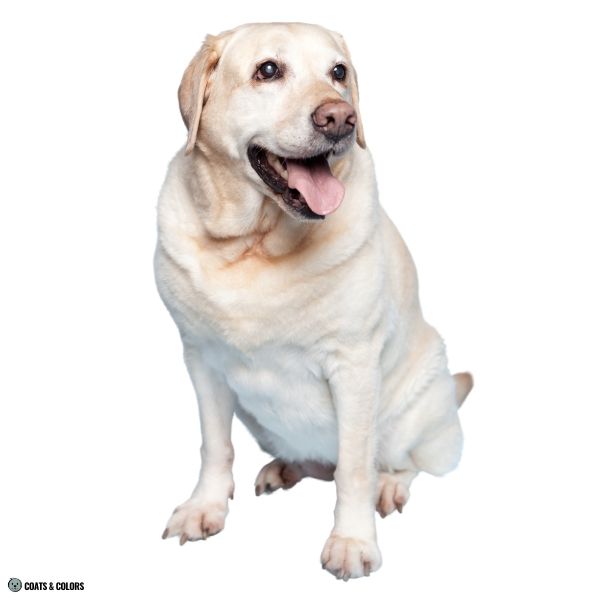
Black-based yellow Labradors express recessive red (e/e) with black eumelanin (B/B or B/b).
Their nose will be black but might show some strong pigment fading.
| E LOCUS | K LOCUS | B LOCUS |
|---|---|---|
| e/e | KB/KB | B/B |
| e/e | KB/KB | B/b |
Yellow, brown-based
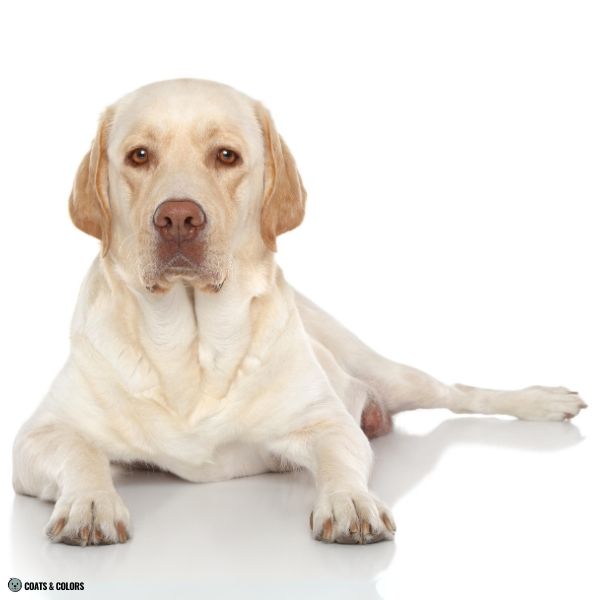
Brown-based yellow “Dudleys” express recessive red (e/e) with brown eumelanin (B/B or B/b).
Their nose will be brown but faded. The AKC considers Dudleys a mismark.
| E LOCUS | K LOCUS | B LOCUS |
|---|---|---|
| e/e | KB/KB | b/b |
Labrador Retriever Color Genetics Summary
Not every breed has all the possible alleles associated with coat colors in their gene pool. And some of the alleles known in a dog breed might cause faulty colors.
Every breed has preferred patterns or colors and patterns they deem undesirable, leading to disqualification in the show ring or exclusion from breeding.
The traits found in a dog breed are not all equally likely. Different alleles are more or less common due to differences in allele frequency.
In the US, chocolate (b/b) seems to be more common in field lines than in show lines[3].
These are color traits that occur in Labrador Retrievers:
| E-LOCUS | Em = melanistic mask E = normal pattern e = recessive red |
| K-LOCUS | KB = dominant black kbr = brindle (rare!) ky = normal pattern (rare!) |
| A-LOCUS | Ay = sable aw = agouti at = tan points a = recessive black |
| B-LOCUS | B = black b = brown |
| D-LOCUS | D = normal pigment |
| S-LOCUS | S = no spotting |
| M-LOCUS | m = non-merle |
Labrador Retriever Colors
What colors do Labrador Retrievers come in?
Eumelanin
Labrador Retrievers come with either black (B/-) or brown (b/b) eumelanin. Brown is also called “chocolate” or “liver” and comes in lighter or darker shades.
Dominant black dogs will have a solid eumelanin-pigmented coat.
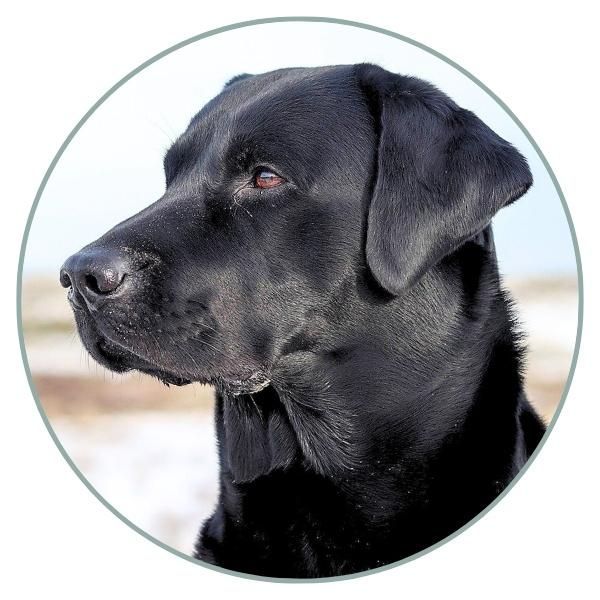
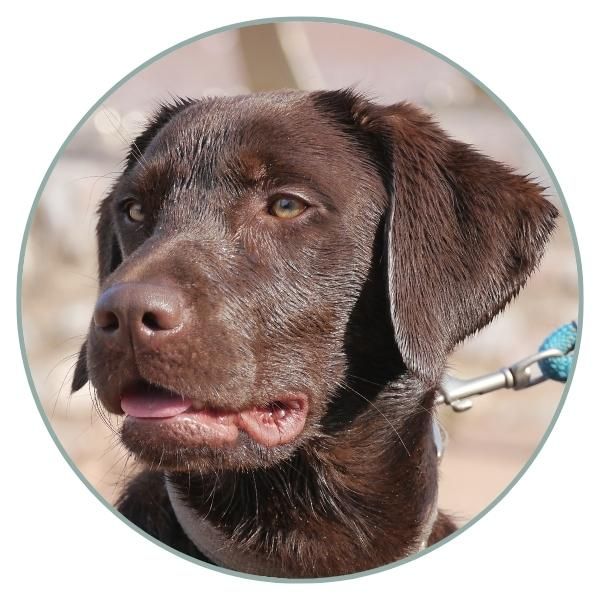
But eumelanin is also present in yellow Labs since it’s the pigment type that’s found in the skin, nose, eye rims, lips, paw pads, nails, or eyes. Yellow Labs also either come with black or brown pigment.
Fading nose pigment is common for yellow dogs. The original pigment color is pushed to the edges of the nose. But the lips or eye rims usually give away a dog’s original pigment color.

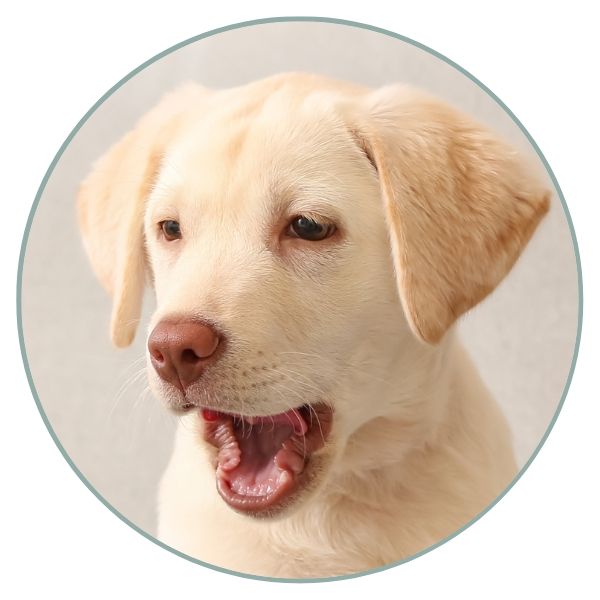
“Dudley“
Officially, Labs are fixed for non-diluted pigment (D/D).
But diluted black or “charcoal” (B/- d/d) and diluted brown or “silver” (b/b d/d) are intentionally produced by color breeders. There is much speculation as to where the dilution gene came from.…
Yellow Labs with diluted nose pigment are called “champagne“.
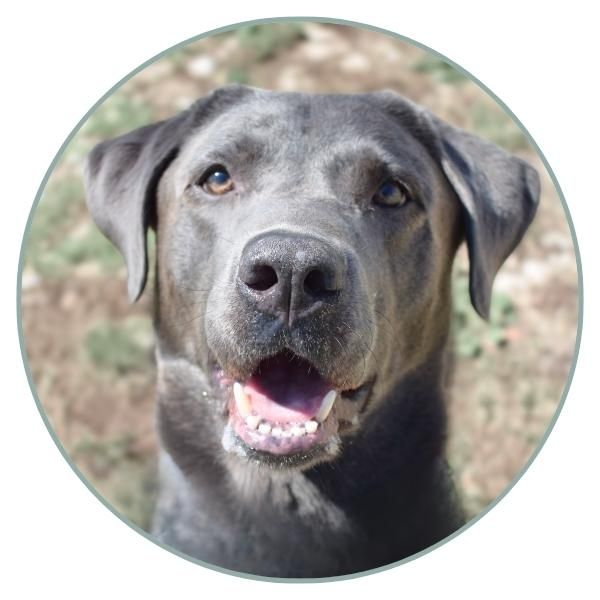
“charcoal“

“silver“
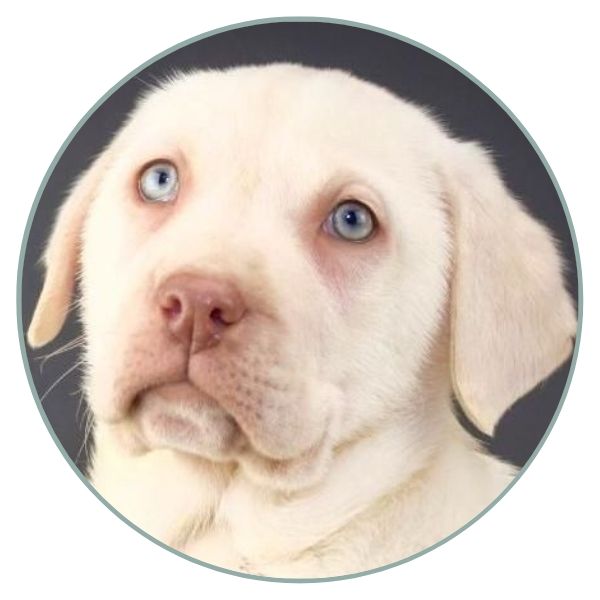
“champagne“
Phaeomelanin
The phaeomelanin in “yellow” Labs comes in a range of shades from light cream to fox red.
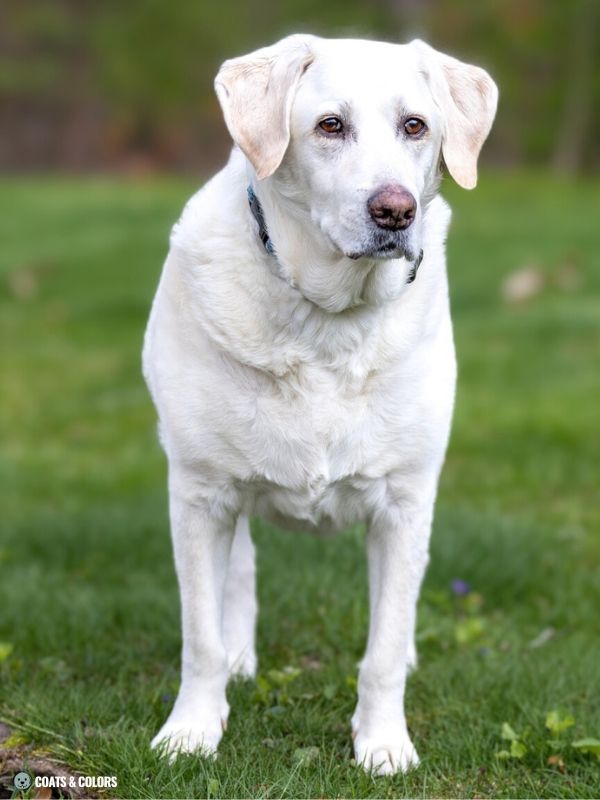

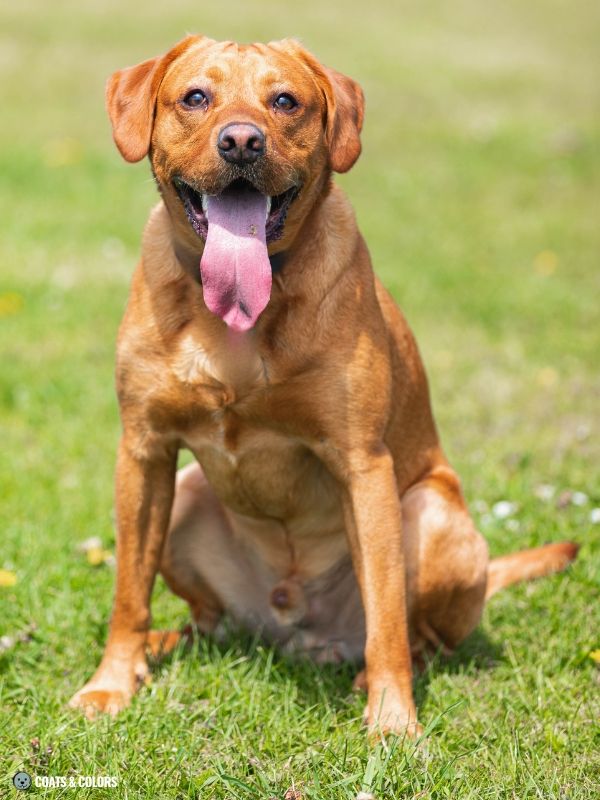
It’s normal for yellow Labs to have some darker ear, face, or tail shading.

White Spotting
Labrador Retrievers do not come with any of the white spotting traits. But they can in some cases have some residual white, for example on the chest or paws.

Eye Color
The FCI breed standard only states that eyes should be “brown or hazel“[2].
In AKC Labradors, the eye color should be brown in black and yellow Labradors, and brown or hazel in chocolates. It’s normal for brown-based dogs to have lighter and more honey-colored eyes[1].
Puppy eyes in brown dogs can look especially light and greenish.
Labradors with color dilution might have lighter eyes with greenish shades even in adulthood.

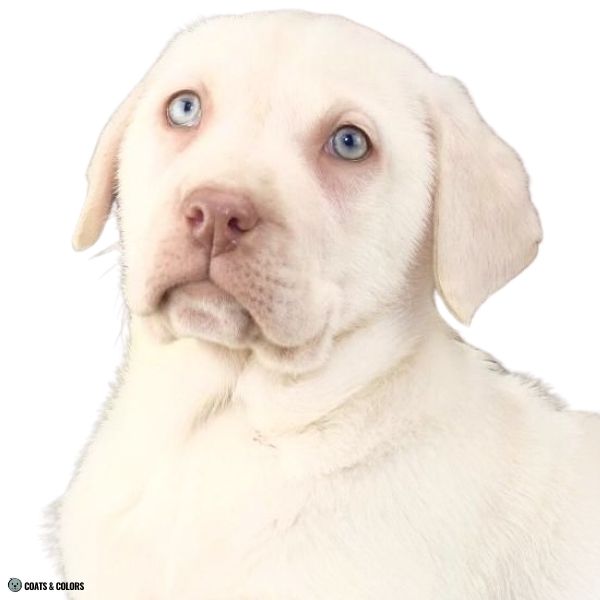
Nose Color
According to the AKC breed standard, the nose should be black on black or yellow dogs, and brown on chocolates. This indirectly excludes Dudleys, brown-nosed yellow dogs[1].



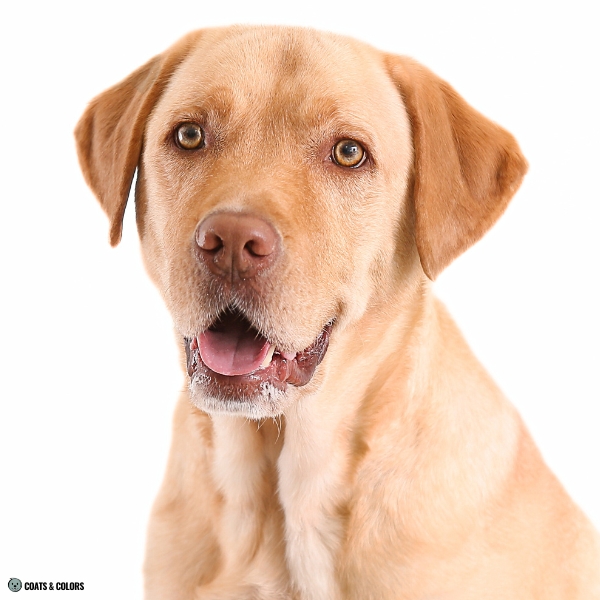
The FCI breed standard does not differentiate between yellow dogs with either pigment[2].
Nose color fading can happen in yellow dogs with any possible eumelanin color.
Champagne, charcoal or silver Labs will have diluted skin and nose pigment.
Labrador Retriever Patterns
What patterns can Labrador Retrievers have?
-
KB/KB-
E/--
B/--
black
-
-
b/b-
brown
-
-
-
e/e-
B/--
yellow
-
-
b/b-
yellow
"Dudley"
-
-
-
A Locus
Did you know that underneath their solid coats, most Labradors have a hidden tan point pattern (at/-)?
However, Labrador Retrievers can not express their A locus pattern since all of these dogs are solid-colored, either from dominant black (E/- KB/KB) or from recessive red (e/e).
Only puppies born with any combination of wild type or brindle alleles (kbr/kbr, kbr/ky, or ky/ky) will express their pattern which is considered a mismark per the Labrador Retriever breed standards.
K Locus
Labrador Retrievers are KB/KB at the K locus.
Dominant black (E/- KB/KB) overrules the ability to produce phaeomelanin.
With eumelanin left as the only option, this causes a solid black (B/-) or brown (b/b) coat.
This makes A-Locus pattern expression impossible. Dominant black dogs can not produce yellow pigment, e.g. they can not have tan points or sable coats.
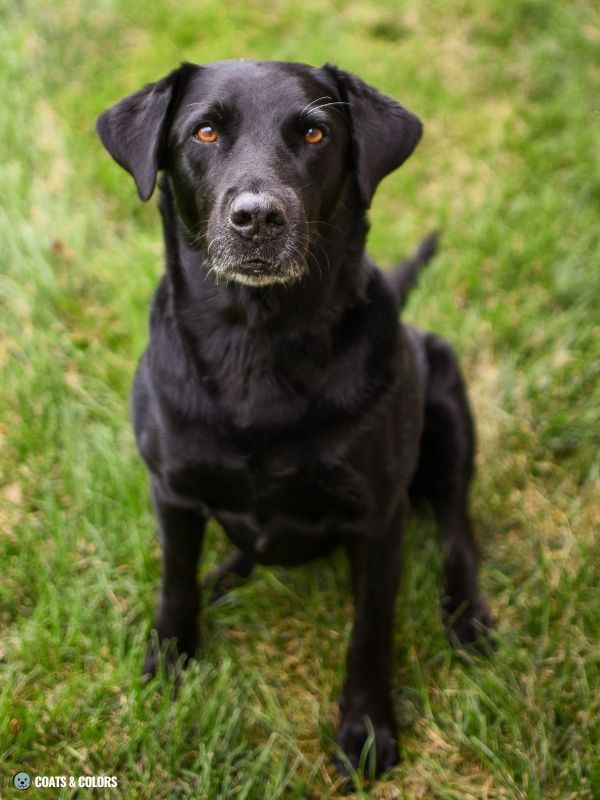
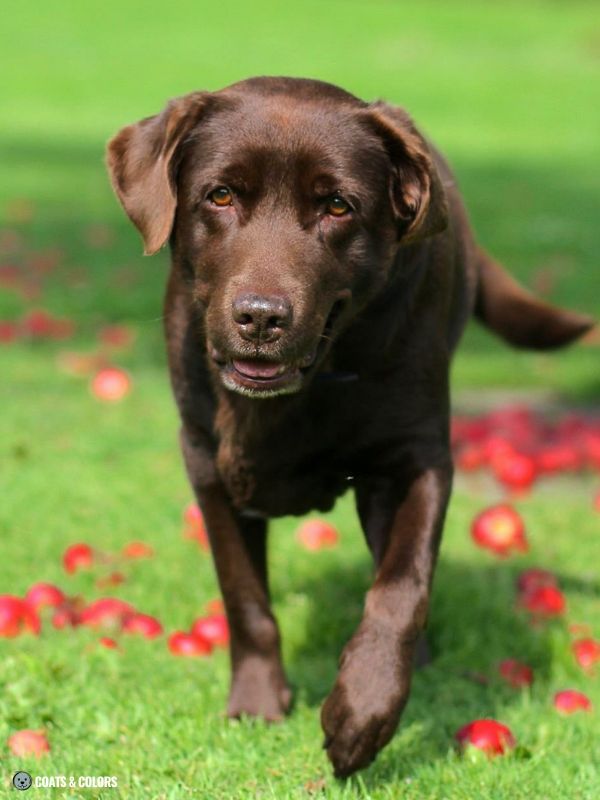
E Locus
Black or brown Labrador Retrievers can express eumelanin in their coat (E/-).
Some Labrador Retrievers have a melanistic mask (Em) allele instead of the wild type (E). But this has no effect… You can’t see a black mask on a black dog or a brown mask on a brown dog anyway.
Last but not least, recessive red (e/e) removes the ability to produce black or brown hairs. This overrules the K locus and causes a solid red or yellow coat instead.
Yellow Labs are still either black or brown dogs, they just can’t express eumelanin in their coat.

Mismarks and Fancy Colors
These are some common non-standard colors in the Labrador Retriever:
| KB/KB dom. black | E/- normal | e/e recessive red |
| B/- d/d diluted black | 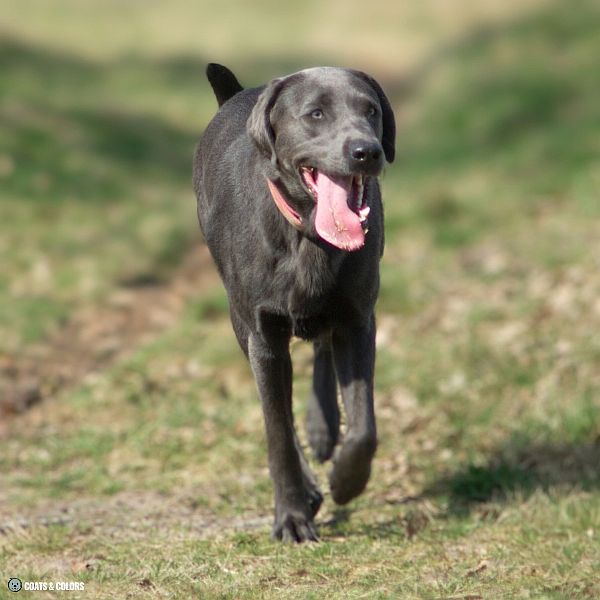 blue, “charcoal” |  blue-based yellow, “champagne” |
| b/b d/d diluted brown |  lilac, “silver” | 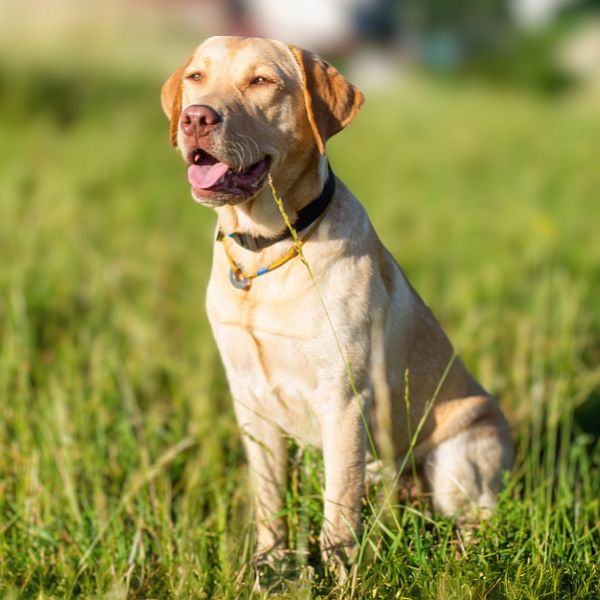 lilac-based yellow, “champagne” |
Brown-based yellow dogs (b/b e/e) or “Dudley” Labradors are not a standard coloration per the AKC standard. The FCI does not seem to mind as much.
In rare cases, Labrador Retrievers have A locus-patterned puppies (E/- ky/ky or kbr/-). The most common mismark is black and tan (at), but sable (Ay) and agouti (aw) also occur at low frequencies[3].
Interestingly, recessive black (E/- ky/ky or kbr/- a/a) is also a possibility in Labrador Retrievers. But these dogs would look solid black or brown and therefore might go unnoticed.
In color-bred lines, Labrador Retrievers also come with pigment dilution (d/d):
Diluted black pigment (B/- d/d) or “blue” is called “charcoal“.
Diluted brown pigment (b/b d/d) or lilac is called “silver“.
Diluted eumelanin (d/d) in yellow dogs (e/e) is called “champagne“.
-
KB/KB-
E/--
B/--
d/d-
"charcoal"
-
-
-
b/b-
d/d-
"silver"
-
-
-
-
e/e-
B/--
d/d-
"champagne"
-
-
-
b/b-
d/d-
"champagne"
-
-
-
-
Charcoal

A dog with diluted black pigment (B/- d/d) and dominant black (KB/-) will have a solid blue coat.
In Labradors, this is called “charcoal“.
| E LOCUS | K LOCUS | B LOCUS | D LOCUS |
|---|---|---|---|
| E/E | KB/KB | B/B | d/d |
| E/E | KB/KB | B/b | d/d |
| E/e | KB/KB | B/B | d/d |
| E/e | KB/KB | B/b | d/d |
Silver

A dog with diluted liver pigment (b/b d/d) and dominant black (KB/-) will have a solid lilac coat.
In Labradors, this is called “silver“.
| E LOCUS | K LOCUS | B LOCUS | D LOCUS |
|---|---|---|---|
| E/E | KB/KB | b/b | d/d |
| E/e | KB/KB | b/b | d/d |
Champagne

A dog with diluted pigment (d/d) and recessive red (e/e) will have a solid yellow coat, often a notch lighter than in non-diluted yellows.
But his kind and nose pigment will be blue (B/ d/d) or lilac (b/b d/d) and he will have lighter eyes.
In Labradors, this is called “champagne“.
| E LOCUS | K LOCUS | B LOCUS | D LOCUS |
|---|---|---|---|
| e/e | KB/KB | B/B | d/d |
| e/e | KB/KB | B/b | d/d |
| e/e | KB/KB | b/b | d/d |
Patterned Coat
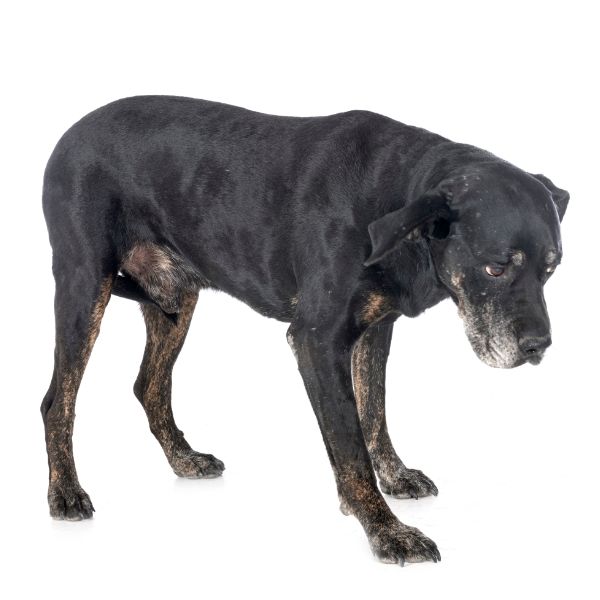
Labradors might express their A locus pattern (sable Ay, agouti aw, most commonly black and tan at) if they get a wild type (ky) or brindle (kbr) allele from each of their parents.
| E LOCUS | K LOCUS |
|---|---|
| E/E | kbr/kbr |
| E/E | kbr/ky |
| E/E | ky/ky |
| E/e | kbr/kbr |
| E/e | kbr/ky |
| E/e | ky/ky |
Learn More
Links
[1] American Kennel Club (AKC): Official Standard for the Afghan Hound (pdf)
[2] Fédération Cynologique Internationale (FCI): Afghan Hound Breed Standard (pdf)
[3] Dreger et al. (2019). True Colors: Commercially-acquired morphological genotypes reveal hidden allele variation among dog breeds, informing both trait ancestry and breed potential. PLoS ONE 14(10): e0223995. https://doi.org/10.1371/journal.pone.0223995

Hi! I’m Steffi. I am a biologist and a big time dog nerd. You are curious about coat color genetics? You’ve come to the right place! Read more.



